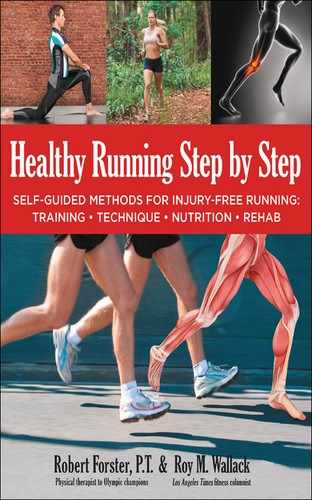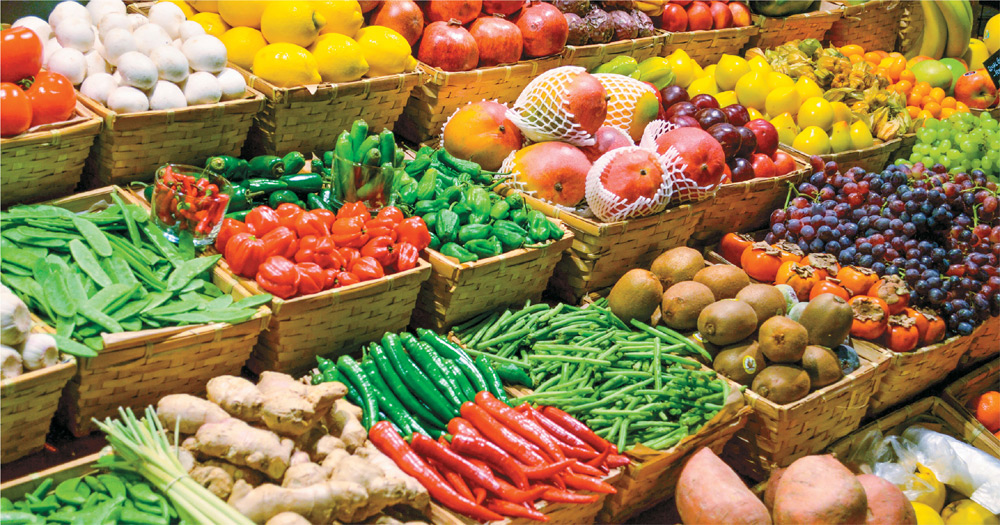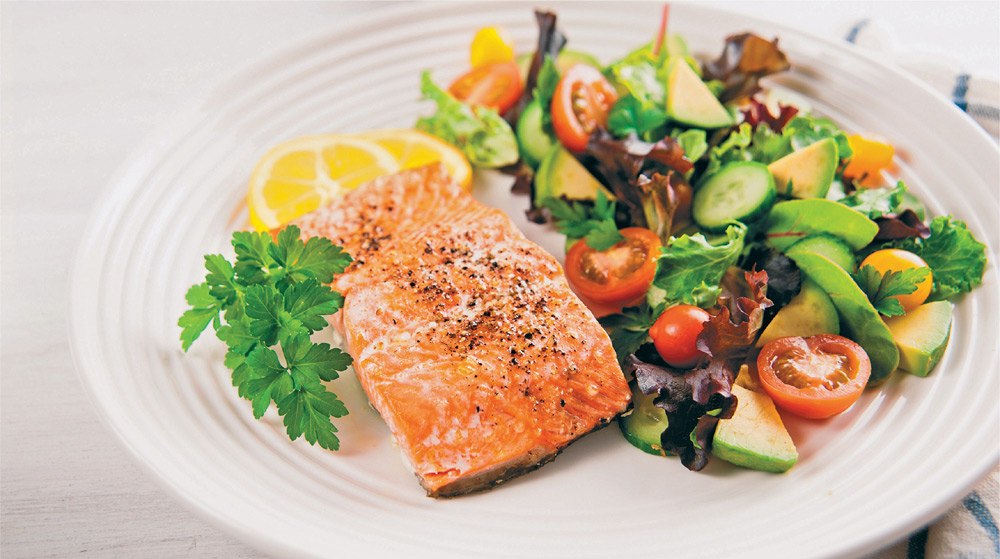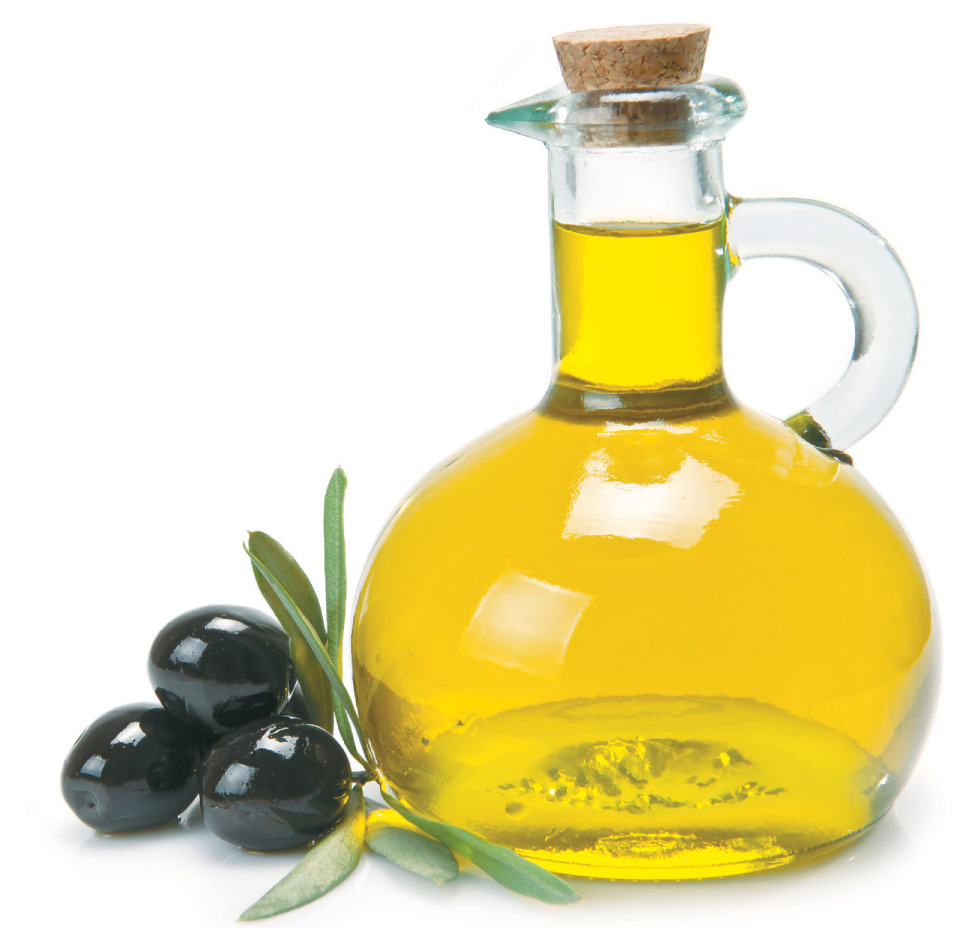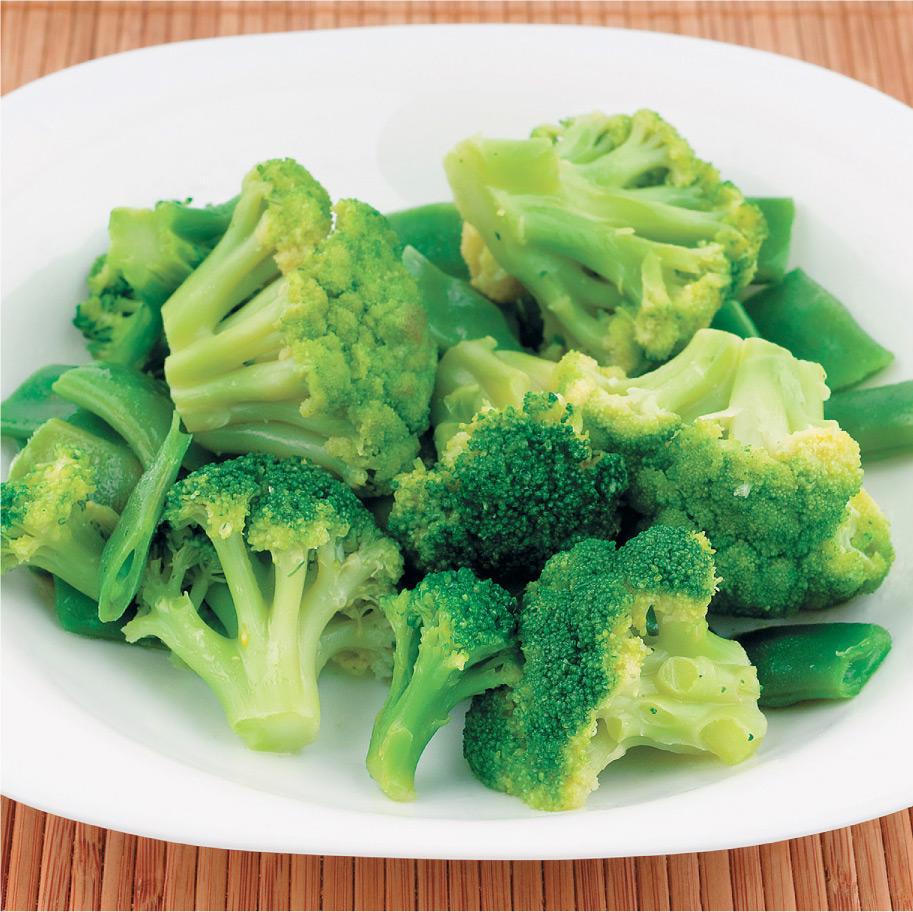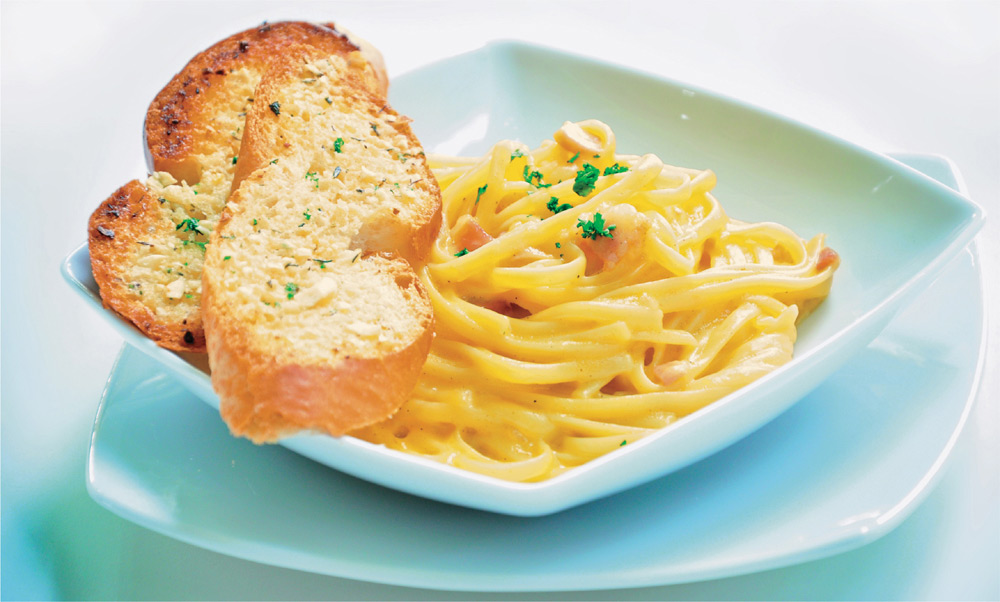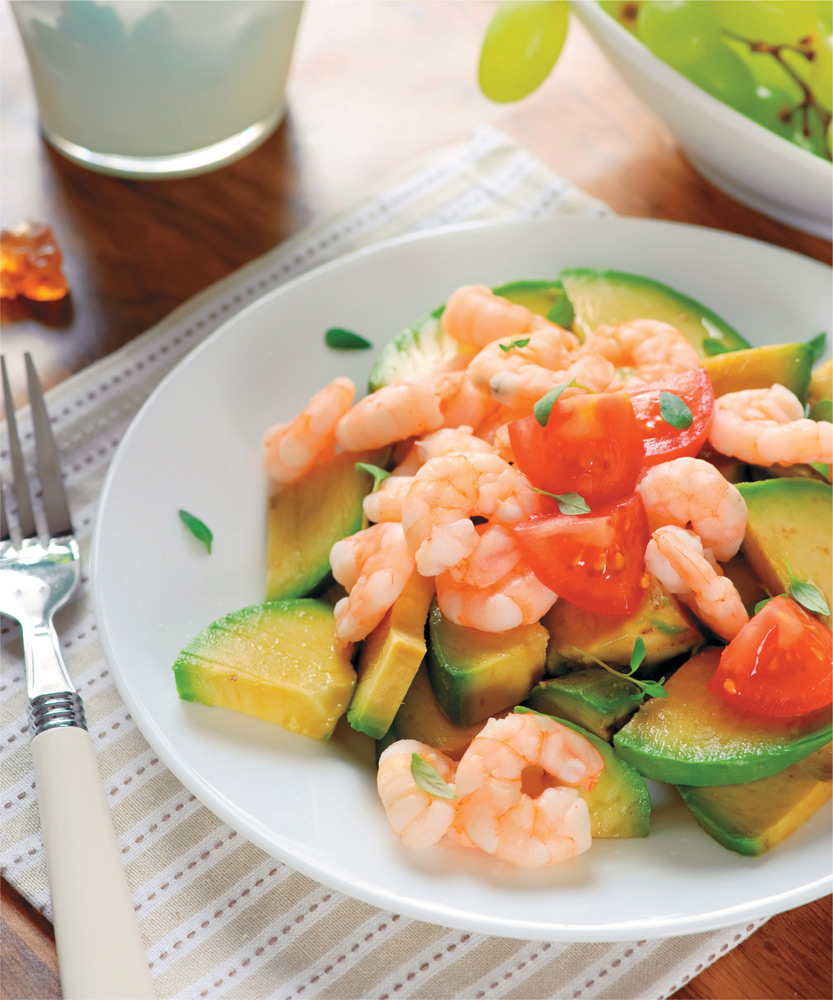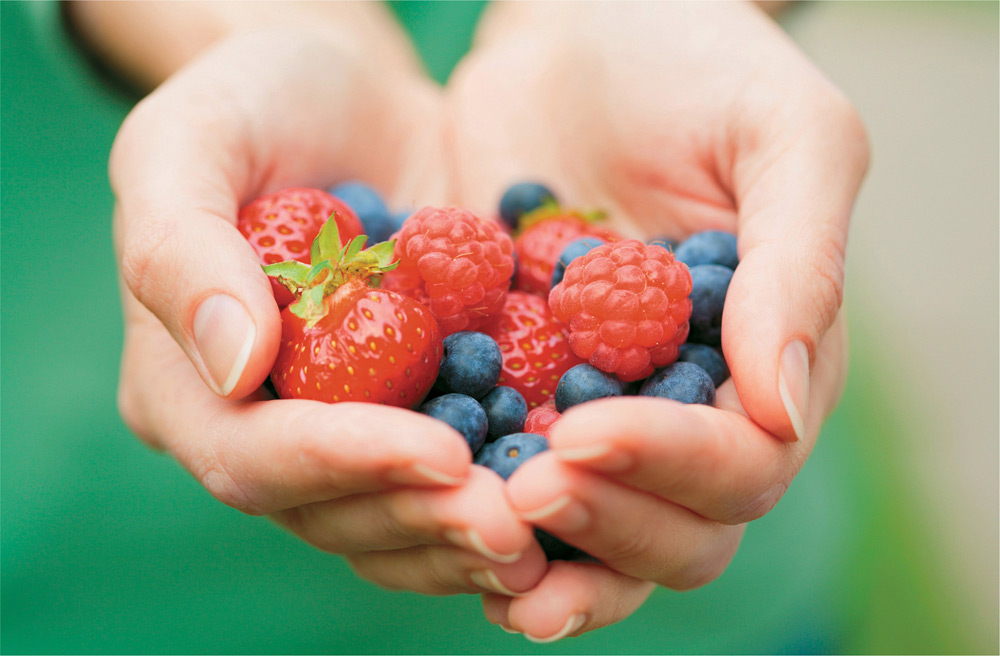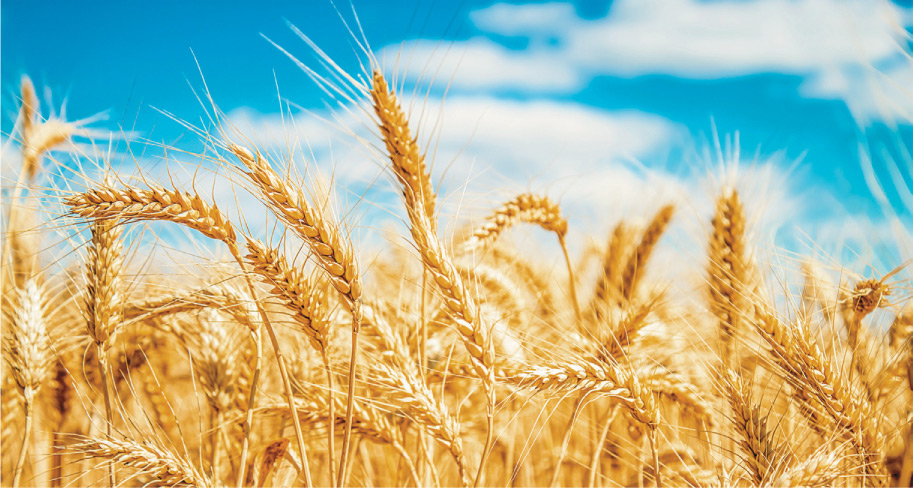5 Nutritional Optimization
Real foods control your insulin, help you burn more fat as fuel, and help deliver optimal performance.
Training is only half the battle when it comes to achieving great results. Food is the other.
Just like with your training, a science-based approach to what you put in your body and when you do it has a great effect on your ability to achieve your athletic and health goals. My approach to health and fitness involves guided exercise and an easy-to-follow, “close-to-the-earth” diet. Both are designed for one singular goal: metabolic efficiency—to make you a better butter burner. We have discussed the importance of precision heart-rate training to develop your fat-burning metabolism in chapter 4; now it’s time to dial in your diet to further serve this goal.
Food Is Fuel for Life—and Natural Food Is Best
All of us, especially athletes, need to alter our relationship with food. We need to view daily nutrition as the source of our life energy and focus on foods that further health, not disease. In recent decades, we’ve been told more about what not to eat than what to eat to stay healthy. Slowly, our relationship with food is changing as our food supply is being exposed as corrupted and unnatural. We are realizing that we need natural foods to help keep us healthy and make us stronger, leaner, and more resistant to disease.
Fact: Most foods in the grocery store have been processed to such a degree by the giant food corporations that they have little nutritional resemblance to their root food sources. Based on extensive and costly research from farming to processing to packaging, the food industries try to get us hooked with appearance and addictive combinations of salt, sugar, and fat. Natural nutritional integrity be damned! What’s worse is that medical and health experts have unintentionally played into the “laboratory-food-is-better-than-nature” syndrome by incorrectly tarring eggs, butter, and other healthy foods as health killers.
The key concept you need to remember about healthy nutrition is that you should eat foods that are close to the ground—meaning unadulterated and unprocessed. It’s rare to find a food that comes out of the ground with unhealthy proportions of sugar, salt, and fat and that is damaging to our bodies.
Insulin Dynamics: Critical to Athletic Performance and Your Health
I feel the best diet plan is simple, science based, easy to achieve, and can be boiled down to one sentence: Control insulin levels throughout the day and train your metabolism to be efficient at burning fat, not storing it.
The problem is that we are constantly fighting the evolutionary forces that have programmed our bodies over millions of years to make and store fat to survive times when food scarcity was a constant threat. We have played right into our antiquated genetic predisposition by feeding ourselves an unnatural diet that encourages rampant production of insulin from the pancreas.
Insulin is released into your bloodstream to transport digested food into your muscle cells for energy production; the excess is stored as body fat. If you are not active and your muscles are not called upon to do any work, then all of the excess calories, whether in the form of protein, carbs, or fat, are transported to the liver and turned into fat.
There are only two ways to fight our body’s built-in evolutionary tendencies: exercise and diet. You have read in chapter 4 that the first order of business for your workouts is to use low-intensity exercise, which reprograms your muscles to favor fats for energy production. Now it’s time to focus on the importance of dietary manipulation during each of the Periodization phases to help achieve the athletic goals of each stage of your training.
KEEP THE CALORIES COMING TO STAY FIT AND STOP STORING FAT
Performance nutrition starts with sound daily nutrition. The value of good daily nutrition is analogous to good sleep habits; if you regularly get adequate sleep at night, but you miss some time in the sack because of a late night, you’re still okay the next day. But do this too often and you will become chronically fatigued and run-down. Likewise, when you eat right every day and then miss a meal or snack here and there, your energy levels and your workouts won’t suffer. To keep energy levels stable and ready, eat often. You must train every cell in your body to expect, receive, and use nutrients frequently (six times a day) throughout the day.
This cellular expectation is created when insulin levels drop a few hours after your last meal, at which time you need to feed your cells again with a snack. Your goal throughout the day is to keep nutrients coming at regular intervals so your metabolism keeps revving all day, burning more calories, and helping maintain a healthy body weight. At the same time, frequent meals keep energy levels constant to facilitate great workouts every time. But when you don’t eat every 2 hours, your insulin levels wane and your metabolic motor goes into an idle. The result is poor energy levels, reduced calorie burn for the day, lackluster workouts, and potential weight gain.
PROVING THE FAT-BURNING PARADIGM
In the fall of 2013, a client of mine named Michael, a 40-year-old Los Angeles radio producer and a category 2 bike racer, decided to put me to the test. “Forster, you claim that I am now a better butter burner,” he said. “For several months now, I’ve been dutifully following all your training and diet advice about the advantages of training my body to burn more fat as fuel. I have lost some weight and feel good. Well, this weekend, I’m going to ride in a 100-mile (160-km) bike ride with my wife and not eat or drink a single calorie all day—just to see if I can make it on water and my stores of body fat alone.”
No problem. The next Tuesday, as expected, he came in happy as a clam. “Drinking water with only electrolytes, I escorted my wife all day long at a slower pace than usual—and felt great!” he said. “I even sprinted the last couple miles at the end!”
It’s an extreme example, but the lesson applies across the board: This stuff works. You’re safer, healthier, and perform better when you train your body to burn a higher percentage of fat to meet the demand for energy at all intensities of exercise and at rest (which we discussed at length in chapter 4). You last longer relying on fats for energy because every body—even skinny ones—contains an almost unlimited supply of energy in fat stores: 80,000 calories! (That blows away the skimpy 2,000 to 3,000 calories of stored carbohydrates.)
Eating and Training Your Way to Metabolic Efficiency
The untrained general public burns a fuel mix of roughly 65 percent carbs and 35 percent fat at rest (some metabolisms are even worse—burning as high as 90 percent carbs), and this is very inefficient. Your goal, instead, is to burn 90 percent fat at rest, and to keep burning fat at higher and higher intensities of exercise.
But training is not limited to physical training. Food training—what you eat—plays an equally important role in changing you into a fat-burning machine. If you want to perform at your best and achieve optimal body weight and health, you must optimize your nutrition strategy—which means that you’ll not only eat a good balance of natural carbs, protein, and fats, but you’ll adjust the mix to match different training phases. Also, be aware that daily meals will be different from your post-workout recovery meals, and that those recovery meals must be eaten promptly after the workout to take advantage of a 15-minute “window” during which the muscles are more receptive to refueling. If you miss this window, you won’t be fully recovered for the next hard workout. I’ll discuss the window in detail at the end of this chapter.
To achieve metabolic efficiency and the better butter burner status, here’s what you must do with your food intake:
BALANCED MEALS: MIX COMPLETE PROTEINS, NATURAL CARBS, AND HEALTHY FATS
Each meal will create a chemical reaction in your body that will either direct your cells to use food for energy or store it as fat. To create fuel, each meal must be a balance of fat, protein, and carbohydrates, all eaten together at once, not separately during the day. It turns out that the three work better together than alone, modulating the release of insulin and other chemical reactions that will either make you efficient or not.
A balanced meal includes meat or fish (protein) with green vegetables (healthy carbs) and avocado (healthy fat).
The best foods are natural and whole, often characterized as Mediterranean in nature: lots of fish and low amounts of red meat, lots of vegetables, fruit, nuts, legumes, and minimally processed whole grains and other carbs and sugars. (See page 88 for more.) In general, these types of foods have a low glycemic index (GI), meaning that the body takes longer to break them down into blood glucose. In this way, low-GI foods help to balance blood sugar, lower insulin requirements, reduce body fat, decrease blood pressure, improve immune system function, promote longevity, and generally enhance well-being. Also, low-GI foods are the best choices for reducing inflammation, which is recognized today as the root cause of much of the body’s problems.
Here’s a breakdown of the three nutrition categories, including desirable foods and how much of them you should eat in each meal and each day. To help with your understanding of portion sizes, we will use a measuring device that you always have on you and is proportionate to your relative size: your hands. The proportions of each food category will vary within the different training phases.
Protein
• Complete animal proteins with all the essential amino acids, such as meat, chicken, fish, dairy products, eggs, plain yogurt, and whole-fat cheeses
• Vegetarian protein sources such as rice and beans, corn and rice, quinoa, soy, nuts and seeds, and nut butters. When you eat a diet with an abundance of veggies, they combine to supply all the essential amino acids necessary to make protein structures in the body.
How much to eat in each meal: 4 to 6 ounces (the size of the palm of your hand)
How much to eat each day: The general rule for runners is .9 grams of protein for every pound of body weight. This will vary from 30 to 50 percent of your total calories per day with Periodization of diet.
Good Fats
• Red meat and certain species of fish, such as salmon, tuna, mackerel, herring, trout, and sardines
• Oils such as olive, coconut, sesame, peanut, and safflower; avocado; nut butters and nuts and seeds such as sunflower seeds, flaxseed, almonds, macadamia nuts, walnuts, cashews, and pecans
How much to eat during each meal: Fatty meats and fish supply all essential fats needed for a meal. When eating leaner protein sources, add 2 tablespoons of the aforementioned oils to make it a well-balanced meal.
How much to eat each day: Athletes should consume 20 to 40 percent of their calories from healthy fat.
Carbohydrates
Your goal is to eliminate starchy and processed carbs, such as pasta, bread, sweets, and baked goods. Even if they are whole grain or whole wheat, they will delay or prevent your transformation into a better butter burner (because of blood sugar spike/insulin reaction and inflammation), especially in the base-training phase.
Good Carbohydrates
(Low-Glycemic-Index Carbs)
• Vegetables, including leafy greens such as lettuce, spinach, and celery
• Legumes, such as green beans, black beans, and garbanzo beans
• Nuts and seeds, such as quinoa, pumpkin seeds, and sunflower seeds
How much to eat during each meal: Enough to fill two hands.
How much to eat each day: From 20 to 40 percent of your total calories should consist of low-glycemic fresh vegetables, nuts, and seeds.
Bad Carbohydrates
(High-Glycemic-Index Carbs)
• Find them in sugar, baked goods, candy, pasta, rice, crackers and potatoes.
How much of them to eat each day: If you cannot eliminate processed carbs and sugary foods, limit them to one handful and never eat them alone. Always pair high-glycemic carbs with a quality protein source to minimize the impact on your metabolism. The best time to eat refined grains and sugary foods, if you must, is after a balanced meal (meaning as dessert). Make them no more than 10 percent of total dietary calories.
Despite the simple carbs, three servings of fruit earn a spot in your daily diet because of their vitamins and fiber content. Always eat after a meal to avoid the spike in insulin.
Note: Fruit gets special treatment. Although fruits are composed of mostly high-glycemic carbohydrate (fructose sugar), they also supply essential vitamins and fiber to your diet. So they get a special pass in your diet. Three servings of fruit per day is the maximum amount. Always eat fruit after meals, when the insulin response will be muted; or after workouts, when the fast-acting carbs are needed for recovery.
New Diet Rules for Runners: Beware of Carbo-Loading, Eat More Fat, Be Sure to Eat Breakfast, and Eat Frequently Throughout the Day
Our knowledge of food and diet is rapidly growing and changing. Some of the old rules that were long accepted as gospel have been turned on their head in recent years, such as “carbo-loading”—ingesting a great pile of carbohydrates the night before a big workout or an event to “pack” the muscles with glycogen fuel. It has long been a tradition in the endurance world. But it’s wrong. Here’s the correct eating strategy:
1. Avoid processed carbs. They prevent use of fats, spike insulin, and cause inflammation.
Processed carbohydrates include bread, pasta, rice, crackers, baked goods, and other sweets. (See “Wean Yourself Off Wheat: For Many Reasons, You’re Better Off without Your Daily Bread” on pages 94–95 on the particular problems with wheat.) Processed carbs are dangerous for three reasons:
• Carbs stop fat use. Carbohydrates in your diet are counterproductive in your effort to improve fat utilization. If you put carbs in your tank, your body will reach for them as fuel before it reaches for fat to make energy for workouts and daily living.
• Carbs spike your insulin and put you to sleep. Example: If you eat a big bowl of pasta, the large insulin spike opens the cell windows and transports the carbs into the cells quickly, removing them from the bloodstream. That makes you sleepy or causes you to crave a sugar fix or caffeine to pick you up.
• Carbs create inflammation in the gut, keeping you chronically inflamed and bloated. Inflammation in the body produces excessive cholesterol. You will learn that saturated fat is not killing us; it’s the carbohydrates that do that.
2. Don’t eat carbs alone.
Dilute and delay the quick absorption of processed carbs and sugars by always eating them with a protein—such as peanut butter on rice crackers. Eat fruit only after meals containing protein. This mixture is one reason why the Mediterranean diet is so effective: It includes combinations of carbs and protein eaten together.
3. Don’t fear fat—love it.
Recent research has exposed the big lie propagated by medical and nutritional science over the last 50 years: that dietary fat is making us fat, ruining our heart and blood vessels, and destroying our health. In fact, the opposite is true. Processed whole grains, the very food that we’ve been told is at the core of a healthy diet, is what is killing us.
Fat is far from the widow maker and heart-attack-waiting-to-happen that it’s been made out to be for the past 40 years. It’s an essential nutrient and a valuable fuel for athletes who have trained their bodies to burn it. This view is increasingly supported by research and many people in the know, the latest being an esteemed cardiologist writing in the October 22, 2013, edition of the BMJ (formerly the British Medical Journal).
Aseem Malhotra, MD, a British interventional cardiology specialist at Croydon University Hospital in London, wrote, “Let’s bust the myth of saturated fat’s role in heart disease.” He says statistics suggest that decades of swearing off red meat, whole milk, and eggs has not only failed to reduce heart disease, but has “paradoxically increased our cardiovascular risks and that the real culprit are the sugars and processed carbs.”
4. Don’t skip breakfast.
Overnight, your metabolism goes down to idle, burning relatively few calories. When you wake up, you must jack up your metabolism with breakfast and start your engine burning calories right away. This will help you become leaner and perform better.
5. Follow the 2-hour rule.
Eat every 2 hours. If you don’t eat from breakfast until lunch, your insulin levels die down and so does your calorie burn. Between meals eat a balanced snack of 100 to 200 calories to keep insulin levels stable, which will prevent you from overeating at your next meal. Good choices include nuts, seeds, cottage cheese, tuna in oil, or yogurt. Never eat carbs alone for a snack. Break out the healthy snacks at 10 a.m., 2 p.m., and 2 hours after dinner.
6. Periodize your diet.
To maximize the effect of each training phase, you must alter the mix of nutrients to match your nutrition to the physiological demands of your workouts. Your daily meals and snacks and your post-workout recovery nutrition will vary as you progress through each phase of the Periodization schedule. This next section discusses this in detail.
Q: ULTIMATELY, WHAT’S THE BEST DIET? A: THE MEDITERRANEAN DIET
The diet plan that I recommend to everyone for healthy living—whether you are an athlete or not—is the Mediterranean diet, an eating pattern typical of Greece, Spain, and southern Italy that includes a balance of the following: olive oil, legumes, unrefined cereals, fruits, vegetables, moderate to high consumption of fish, moderate consumption of dairy products (mostly as cheese and yogurt), moderate wine consumption, and low consumption of meat and meat products. The great thing about the Mediterranean diet is that it’s not only healthy but tasty, so it’s very doable. Even better, after two decades of kudos and anecdotal evidence from longevity researchers, the Mediterranean diet’s health benefits are now official. A first-of-its-kind study, published on April 4, 2013, in the New England Journal of Medicine, found that the Mediterranean diet reduced death rates from heart attacks by 30 percent.
The study, “Primary Prevention of Cardiovascular Disease with a Mediterranean Diet,” included 7,447 Spaniards, aged 55 to 80, with heart-disease risk factors such as type 2 diabetes, obesity, smoking, and family history of heart disease. The researchers divided the massive test sample into three groups. One followed a regular diet and was asked to eat three servings a day of bread, pasta, potatoes, and rice. The other two groups followed the Mediterranean diet, with one taking 4 tablespoons of extra-virgin olive oil a day and the other group consuming an ounce of walnuts, almonds, and hazelnuts per day. Both Mediterranean diet groups ate at least three servings a day of fruits and two servings of vegetables; fish at least three times a week; legumes, which include beans, peas, and lentils, at least three times a week; white meat instead of red; at least seven glasses of wine a week with meals (if they were accustomed to drinking); and were asked to avoid commercially made cookies, cakes, and pastries and limit consumption of dairy products and processed meats.
Sounds great, right? But, you may be wondering, how is this possible, given the large presence of carbohydrates such as pasta, bread, and cereal in the Italian version of the Mediterranean diet? It works because of the mix, the freshness of the food, and the portions. When mixed up and eaten as a meal, not in isolation, the low glycemic index of the “good” food (protein, fat, and veggies) slows the breakdown of the “bad” food—the high-glycemic bread, pasta, and cereals. Also, the market-fresh whole foods replace the calorie-packed processed meals and snacks Americans are hooked on. And then there is the portion of the carbs in the Mediterranean diet. They are not the super-sized versions we’ve become accustomed to in the United States; a few ounces of pasta in the Italian primi piatti (first plate) is easily dealt with by the body as opposed to the heaping bowl of pasta served in most American restaurants and homes.
Bottom line: The Mediterranean diet is quite healthy if you don’t overdose on the processed carbs. Just make sure to load up on salad and protein when you dig into the pizza, pasta, and oil-dipped garlic bread.
HOW TO PERIODIZE YOUR EATING FOR OPTIMAL EFFECT
Because each training phase has specific goals and stresses your body in different ways in order to achieve desired adaptations, you must match each with an optimal nutritional intake.
Long-Slow Distance (LSD) Base-Training Phase
Approximate nutritional proportions: 20% carbs, 40% protein, 40% fat
The base-training phase is all about increasing your ability to burn fat to make energy. To help achieve this all-important goal, limit carbohydrate intake in your daily diet as well as before and during workouts. This will help train your muscles to burn more fat while you exercise. Instead of sweet gels, bars, and sports drinks, use plain water, nuts, nut butters, seeds, and electrolytes.
Also, limit your carbs during the recovery meal after your base-paced, shorter workouts. If you’ve stayed aerobic during your shorter workouts (90 minutes or less), you did not use up a lot of carbs, therefore, there is no need to replenish carbs. The exception is after your LSD workouts, which will have chipped away at the carbohydrate (i.e., glycogen) stored in your body. So after your LSD runs, you must break the low-carb diet of this phase to quickly restore glycogen stores before your next workout.
The best way to do this, ironically, is with carb sources that break down quickly into sugars—the very-high-glycemic foods you should typically stay away from. Examples include potatoes, rice, and non-wheat pastas, juices, applesauce, and so on. For those who continue to consume gluten in their diets, breads (even white bread) and pasta are good choices. If you have a sweet tooth, now is the time you can indulge yourself and consume candy but not chocolate, because the fat content will delay how fast it leaves your stomach.
Strength Development Phase
Approximate nutritional proportions: 30% carbs, 50% protein, 20% fat
The major focus of this phase is to increase lean muscle. Accordingly, it is essential that you are taking in enough quality protein. Of the twelve amino acids, nine are essential to making healthy muscle tissue. Animal protein (fish, meat, poultry) gives you all nine. It’s not as easy being a vegetarian athlete, because getting all nine amino acids from nonanimal protein sources requires you to become a serious amino-acid analyzer.
Power Conversion Phase
Approximate nutritional proportions: 40% carbs, 40% protein, 20% fat
During this phase, you are performing high-intensity activities, such as hill repeats and interval training, that burn carbohydrates, so…
• Up the carbs: Increase your daily intake to three handfuls each meal. Try to eat healthy, vegetable-based carbs, such as quinoa, garbanzo beans, nuts, and legumes. If you must have processed carbs such as bread and pasta, limit yourself to no more than one handful.
• Up the fruit: Increase fruit consumption to five servings a day. The vitamin C in fruit strengthens the immune system, which is heavily taxed during intervals. Because fruit is mostly sugar, it’s best to eat it after the meal, so the other food groups previously consumed limit an insulin spike.
Speed or Strength Endurance Phase
• Approximate nutritional proportions for speed (e.g., 5ks to 10ks): 40% carbs, 40% protein, 20% fat
• Approximate nutritional proportions for strength-endurance (e.g., half- and full marathons): 30% carbs, 40% protein, 30% fat
With even-higher-intensity training in this phase, your carbohydrate needs remain at the highest of the training cycle. Remember that high-intensity workouts rely on carbohydrate metabolism. Continue the mix of nutrients of the power conversion phase.
Taper and Peak Phase
Approximate nutritional proportions: 30% carbs, 50% protein, 20% fat
This is not simply a period of recovery where your fitness evolves but also the time to put this newfound fitness to work. Although your overall workout volume decreases dramatically, short, hard workouts spaced out every 72 hours will help you find your race “gear.” It is critical that you reduce overall calorie intake (10 to 20 percent) to match your calorie input to your reduced overall energy output; otherwise you will put on weight—not a good strategy for fast times on race day.
THE 15-MINUTE RECOVERY WINDOW
To ensure a speedy recovery and best adaptation from a workout, you need to take in both carbohydrates and protein—the former will begin to refill the stores of glycogen you’ve used up, the latter will jump-start muscle repair. Do this quickly. Science has established that there is a 15-minute window immediately following exercise in which the muscle cells are most receptive to absorbing these nutrients. If you let the window close without supplying them, all the hard work you just did and your recovery are compromised. So you should…immediately gulp down something sweet.
That will not only expand the cellular window but keep it open longer. Technically, pouring sugary, high-glycemic stuff such as fruit juices or recovery drinks into your bloodstream seconds after your workout is done will stimulate your pancreas to release insulin. So will the aforementioned sources that break down quickly into sugars: potatoes, rice, non-wheat pastas, applesauce, and breads. Make sure not to ingest much, if any fat, which will delay digestion. (That’s why a chocolate bar isn’t a good idea, because it contains too much fat. So feed your sweet tooth immediately but not with a Hershey or Snickers bar.)
Actually, to stimulate the best insulin response, researchers have found that the optimal recovery drink or food has a 4-to-1 carb-to-protein ratio. That little bit of protein kicks the pancreas into a slightly higher gear, putting out even higher levels of insulin, which now works to aid recovery.
From the time you ingested sugary stuff, you get another 30 or 40 minutes of open-window time. That gives you time to get in a quick shower and then eat a balanced recovery meal of protein, carbs, and fat in proportions dictated by the phase of your training. In about 4 hours, your glycogen will be fully restored.
Miss this window, and recovery slows way down. All this leads to the obvious question: What actually happens if you miss the window? It dramatically delays full recovery. Instead of carbohydrate being repacked in the muscle cells, it mainly floats around in your bloodstream. The liver then grabs a lot of it and turns it into fat for storage. It then can take as long as 24 hours to restore glycogen. The result is experienced as ravenous hunger the rest of the day and low energy the following workout.
